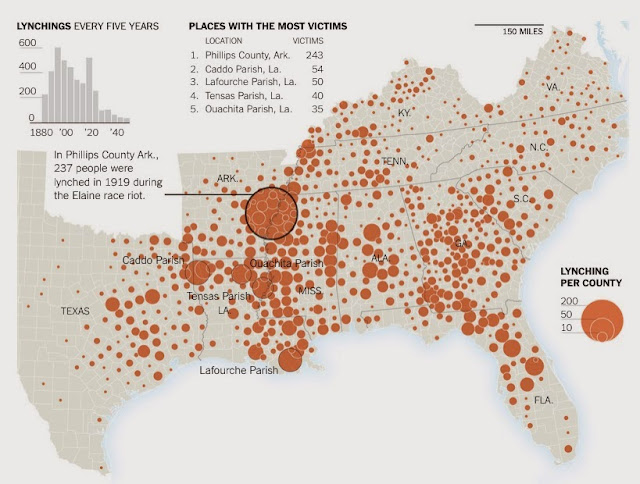When I finished Graeme Wood's long
opus explicating ISIS in
The Atlantic, I felt as if I needed a bath. Wood brings the apparatus of journalism and academia to bear on the Islamic State, demonstrating that Syria and Iraq have spawned a horde of ferocious irrational religionists who aim to impose the unvarnished essence of Islam on everyone within their reach. That unvarnished essence is the culture of 7th century warring tribal Arabia; any other understanding of the religion of Islam is just an illegitimate gloss.
Although everything he reports may be true to Wood's particular sources and interviewees, he practices a vicious myopia by substituting a cluster of the worst possible Islamic crackpots for the whole body of some 1.6 billion Muslims worldwide. This is propaganda, not intellectual discourse.
The article is not only quasi-sophisticated Islamophobia, it is also war porn. If these martyrdom seeking fanatics cannot be dissuaded from their violent obsessions by any means but extermination, we in "the West" can and should indulge our most muscular fantasies of violent domination. This is some ugly shit.
If this noxious item had appeared in say,
The Weekly Standard, home of manly American imperialism, it would not be getting the attention it seems to be receiving. Despite having a resident Zionist in Jeffrey Goldberg,
The Atlantic is usually something less of a cheer leader for dumb wars.
***I'll outsource my main commentary on Wood to
Mohamed Ghilan at the London-based
Middle East Eye.
Wood swiftly dismisses the validity of beliefs the majority of Muslims hold with regards to Islam, disregards the official position most Muslim theologians have expressed on ISIS and violent extremism, and grants Islamic doctrinal legitimacy only to that which is being promoted by spokespersons from ISIS or their fans.
The argument posed in the article is that the only group of Muslims who take their Islamic texts seriously is ISIS. ...
Ghilan's article is worth reading -- far more than Wood's screed.
***As a Christian living in a culture shaped by cultural Christianity, I find it helpful to try to understand the form of Islamophobia which Wood indulges by analogy with more familiar religious formulations. He finds sources who adhere to and enact the most repulsive potentialities in Muslim texts and then treats these cranks as normative. Let's try this with a familiar Christian text from John's account of Jesus' teachings (14:6):
No one comes to the Father, except through me.
It's not hard to find fundamentalist Christians who understand that text to mean that Jesus acts as a kind of gatekeeper. People who fail to recognize Jesus as God are out of luck with the Deity and condemned to everlasting torment.
But we know that in daily life, even if large numbers of people profess to interpret this text in such a dread-filled manner, that's not how their lives work out in practice. Sure -- there are large pockets of hell and damnation fans. But many, perhaps most, fundies make a kind of mental allowance for any nonbelievers they actually know; "old uncle Harry may not have found Jesus, but he's not really such a bad guy ..." Sociologists of religion Robert D. Putnam (Harvard) and David E. Campbell (Notre Dame) recently
published a whole book about how this works. Even if some Muslims (perhaps driven mad by Western imperialism?) are a bit more rigorous about their texts than some U.S. Christians, it defies human nature to assume this moderating humanity does not exist across a broad swath of the planet.
And besides, many Christians don't think the Jesus text cited means that the itinerant rabbi was claiming to be God's gatekeeper. Leaving aside arguments about whether Jesus ever said any such thing, we suspect he is just making the implausible assertion that God chose in him to be human and that this mystery means something powerful about how God is present among human beings. In this Christian perspective, Jesus accomplishes the purpose of his life whether we understand what he says or not -- and whatever that accomplishment means does not depend at all on what we may believe. The text is a statement about the nature of reality, the nature of God and humanity, not a behavioral injunction to have "right" thoughts and feelings.
For much of its history, the Islamic way to God fostered an
intellectually creative human endeavor. Perhaps today, not so much so. The same could be said of Christianity. We do not live in an era in which the search for God makes free in most contexts. But humans seem to default to some flavor of religion even in these times.
And we are a stupid, suicidal species when we insist on holding up the worst potentialities of religion and going to war over them.








































